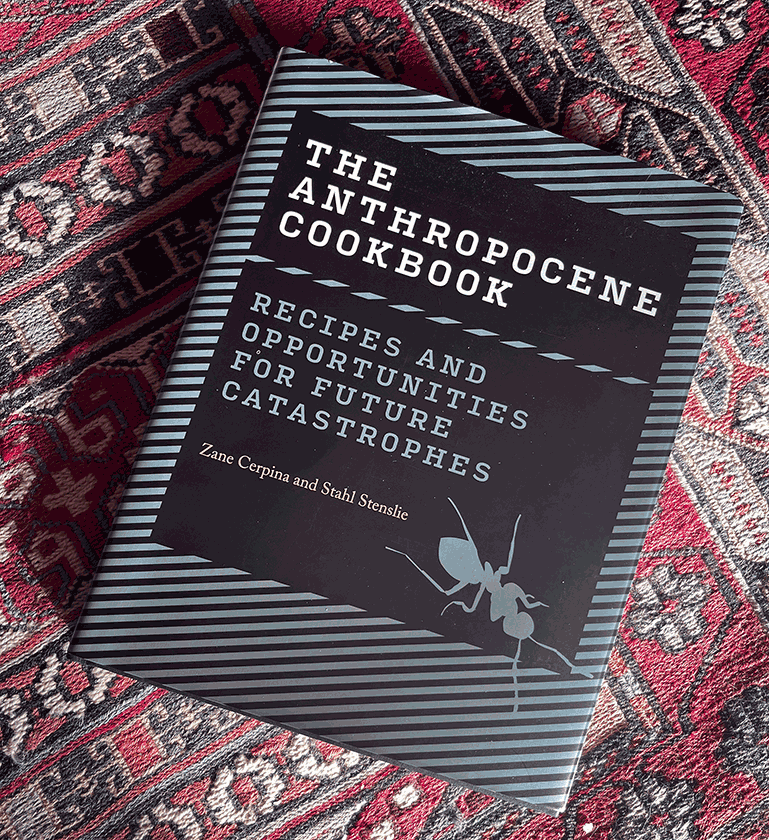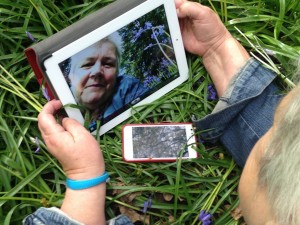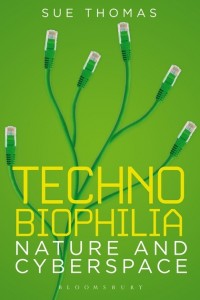An October 5, 2023 announcement (received via email) from Toronto’s ArtSci Salon lists two events coming up in October 2023,
These two Events are part of the international Leonardo LASER series
LASER Toronto is hosted by Nina Czegledy and Roberta Buiani
The Anthropocene Cookbook on October 16, 2023

From the Toronto ArtSci Salon October 5, 2023 announcement,
Oct 16 [2023], 3:30 PM [ET]
The Anthropocene cookbookwith authors
Zane Cerpina & Stahl Stenslie
Cerpina and Stenslie are the authors of
The Anthropocene Cookbook. How to survive in the age of catastrophesJoin us to welcome Cerpina and Stenslie as they introduce us to their
book and discuss the future cuisine of humanity. To sustain the
soon-to-be 9 billion global population we cannot count on Mother
Earth’s resources anymore. The project explores innovative and
speculative ideas about new foods in the field of arts, design, science
& technology, rethinking eating traditions and food taboos, and
proposing new recipes for survival in times of ecological catastrophes.To match the topic of their talk, attendees will be presented with
“anthropocene snacks” and will be encouraged to discuss food
alternatives and new networks of solidarity to fight food deserts,
waste, and unsustainable consumption.This is a Hybrid event: our guests will join us virtually on zoom.
Join us in person at Glendon Campus, rm YH190 (the studio next to the
Glendon Theatre) for a more intimate community experience and some
anthropocene snacks. If you wish to join us on Zoom, pleaseThis event is part of a series on Emergent Practices in Communication,
featuring explorations on interspecies communication and digital
networks; land-based justice and collective care. The full program can be found hereThis initiative is supported by York University’s Teaching Commons Academic Innovation Fund
Zane Cerpina is a multicultural and interdisciplinary female author,
curator, artist, and designer working with the complexity of
socio-political and environmental issues in contemporary society and in
the age of the Anthropocene. Cerpina earned her master’s degree in
design from AHO – The Oslo School of Architecture and Design and a
bachelor’s degree in Art and Technology from Aalborg University. She
resides in Oslo and is a project manager/curator at TEKS (Trondheim
Electronic Arts Centre). She is also a co-founder and editor of EE:
Experimental Emerging Art Journal. From 2015 to 2019, Cerpina was a
creative manager and editor at PNEK (Production Network for Electronic
Art, Norway).Stahl Stenslie works as an artist, curator and researcher specializing
in experimental media art and interaction experiences. His aesthetic
focus is on art and artistic expressions that challenge ordinary ways of
perceiving the world. Through his practice he asks the questions we tend
to avoid – or where the answers lie in the shadows of existence.
Keywords of his practice are somaesthetics, unstable media,
transgression and numinousness. The technological focus in his works is
on the art of the recently possible – such as i) panhaptic
communication on Smartphones, ii) somatic and immersive soundspaces, and
iii) design of functional and lethal artguns, 3D printed in low-cost
plastic material.He has a PhD on Touch and Technologies from The School
of Architecture and Design, Oslo, Norway. Currently he heads the R&D
department at Arts for Young Audiences Norway.
If you’re interested in the book, there’s the anthropocenecookbook.com, which has more about the book and purchase information,
The Anthropocene Cookbook is by far the most comprehensive collection of ideas about future food from the perspective of art, design, and science. It is a thought-provoking book about art, food, and eating in the Anthropocene –The Age of Man– and the age of catastrophes.
Published by The MIT Press [MIT = Massachusetts Institute of Technology]
| mitpress.mit.eduSupported by TEKS
Trondheim Electronic Arts Centre
| www.teks.no
*Date changed* Streaming Carbon Footprint on October 27, 2023
Keep scrolling down to Date & location changed for Streaming Carbon Footprint subhead.
From the Toronto ArtSci Salon October 5, 2023 announcement,
Oct 27, [2023] 5:00-7:00 PM [ET]
Streaming Carbon Footprintwith
Laura U. Marks
and
David Rokeby
–
Room 230
The Fields Institute for Research in Mathematical Sciences
222 College Street, TorontoWe are thrilled to announce this dialogue between media Theorist Laura U. Marks and Media Artist David Rokeby. Together, they will discuss a well known elephant in the room of media and digital technologies: their carbon footprint. As social media and streaming media usage increases exponentially, what can be done to mitigate their impact? are there alternatives?
This is a live event: our guests will join us in person.
if you wish to join us on Zoom instead, a link will be circulated on our website and on social media a few days before the event. The event will be recorded
Laura U. Marks works on media art and philosophy with an intercultural focus, and on small-footprint media. She programs experimental media for venues around the world. As Grant Strate University Professor, she teaches in the School for the Contemporary Arts at Simon Fraser University in Vancouver, Canada. Her upcoming book The Fold: From Your Body to the Cosmos will be published I March 2024 by Duke University Press.
David Rokeby is an installation artist based in Toronto, Canada. He has been creating and exhibiting since 1982. For the first part of his career he focussed on interactive pieces that directly engage the human body, or that involve artificial perception systems. In the last decade, his practice has expanded to included video, kinetic and static sculpture. His work has been performed / exhibited in shows across Canada, the United States, Europe and Asia.
Awards include the first BAFTA (British Academy of Film and Television Arts) award for Interactive Art in 2000, a 2002 Governor General’s award in Visual and Media Arts and the Prix Ars Electronica Golden Nica for Interactive Art 2002. He was awarded the first Petro-Canada Award for Media Arts in 1988, the Prix Ars Electronica Award of Distinction for Interactive Art (Austria) in 1991 and 1997.
I haven’t been able to dig up any information about registration but it will be added here should I stumble across any in the next few weeks. I did, however, find more information about Marks’s work and a festival in Vancouver (Canada).
Fourth Annual Small File Media Festival (October 20 -21, 2023) and the Streaming Carbon Footprint
First, let’s flip back in time to a July 27, 2021 Simon Fraser University (SFU) news release (also published as a July 27, 2021 news item on phys.org) by Tessa Perkins Deneault,
When was the last time you watched a DVD? If you’re like most people, your DVD collection has been gathering dust as you stream movies and TV from a variety of on-demand services. But have you ever considered the impact of streaming video on the environment?
School for the Contemporary Arts professor Laura Marks and engineering professor Stephen Makonin, with engineering student Alejandro Rodriguez-Silva and media scholar Radek Przedpełski, worked together for over a year to investigate the carbon footprint of streaming media supported by a grant from the Social Sciences and Humanities Research Council of Canada.
“Stephen and Alejandro were there to give us a reality check and to increase our engineering literacy, and Radek and I brought the critical reading to it,” says Marks. “It was really a beautiful meeting of critical media studies and engineering.”
After combing through studies on Information and Communication Technologies (ICT) and making their own calculations, they confirmed that streaming media (including video on demand, YouTube, video embedded in social media and websites, video conferences, video calls and games) is responsible for more than one per cent of greenhouse gas emissions worldwide. And this number is only projected to rise as video conferencing and streaming proliferate.
“One per cent doesn’t sound like a lot, but it’s significant if you think that the airline industry is estimated to be 1.9 per cent,” says Marks. “ICT’s carbon footprint is growing fast, and I’m concerned that because we’re all turning our energy to other obvious carbon polluters, like fossil fuels, cars, the airline industry, people are not going to pay attention to this silent, invisible carbon polluter.”
One thing that Marks found surprising during their research is how politicized this topic is.
Their full report includes a section detailing the International Energy Association’s attack on French think tank The Shift Project after they published a report on streaming media’s carbon footprint in 2019. They found that some ICT engineers state that the carbon footprint of streaming is not a concern because data centres and networks are very efficient, while others say the fast-rising footprint is a serious problem that needs to be addressed. Their report includes comparisons of the divergent figures in engineering studies in order to get a better understanding of the scope of this problem.
The No. 1 thing Marks and Makonin recommend to reduce streaming’s carbon footprint is to ensure that our electricity comes from renewable sources. At an individual level, they offer a list of recommendations to reduce energy consumption and demand for new ICT infrastructure including: stream less, watch physical media including DVDs, decrease video resolution, use audio-only mode when possible, and keep your devices longer—since production of devices is very carbon-intensive.
Promoting small files and low resolution, Marks founded the Small File Media Festival [link leads to 2023 programme], which will present its second annual program [2021] of 5-megabyte films Aug. 10 – 20. As the organizers say, movies don’t have to be big to be binge-worthy.
Learn more about Marks’ research and the Small File Media Festival: https://www.sfu.ca/sca/projects—activities/streaming-carbon-footprint.html
And now for 2023, here’s a video promoting the upcoming fourth annual festival,
The Streaming Carbon Footprint webpage on the SFU website includes information about the final report and the latest Small File Media Festival. Although I found the Small File Media Festival website also included a link for purchasing tickets,
The Small File Media Festival returns for its fourth iteration! We are delighted to partner with The Cinematheque to present over sixty jewel-like works from across the globe. These movies are small in file size, but huge in impact: by embracing the aesthetics of compression and low resolution (glitchiness, noise, pixelation), they lay the groundwork for a new experimental film movement in the digital age. This year, six lovingly curated programs traverse brooding pixelated landscapes, textural paradises, and crystalline infinities.
…
Join us Friday, October 20 [2023] for the opening-night program followed by a drinks reception in the lobby and a dance party in the cinema, featuring music by Vancouver electronic artist SAN. We’ll announce the winner of the coveted Small-File Golden Mini Bear during Saturday’s [October 21, 2023] award ceremony! As always, the festival will stream online at smallfile.ca after the live events.
We’re most grateful to our future-forward friends at the Social Sciences and Humanities Research Council of Canada, Canada Council for the Arts, and SFU Contemporary Arts. Thanks to VIVO Media Arts, Cairo Video Festival, and The Hmm for generous distribution and exhibition awards, and to UKRAïNATV, a partner in small-file activism.
Cosmically healthy, community-building, and punk AF, small-file ecomedia will heal the world, one pixel at a time.
There we have it. And then, we didn’t
*Date & location change* for Streaming Carbon Footprint event
From an October 27, 2023 ArtSci Salon notice,
Nov 7, [2023] 5:00-7:00 PM
Streaming Carbon Footprint
with
Laura U. Marks
and
David Rokeby
Tuesday, November 7 [2023]
5:00-7:00 pm
The BMO Lab
15 King’s College Circle, room H-12
Toronto, Ontario M5S 3H7
Good luck to the organizers. It must have been nervewracking to change the date so late in the game.


